This guest article written by Andrey Ulanov.
In 1941, at the NIPSVO shooting range, the Soviet military conducted a series of comparative tests of standard foreign and Soviet pistols as well as the Soviet experimental “Voevodin system” pistol.
The Lahti pistol results turned out to be quite surprising. This pistol had been considered very reliable in the USSR for a long time, probably due to how little practical experience Soviets had with it. During the “Winter War” of 1939-40, the pistols from Lahti came to the front in very limited quantities. During the Continuation War, the front line remained mostly motionless. Unlike the Germans at Stalingrad, the Finnish army had never been surrounded. As a result, most of the soldiers and officers of the Soviet army never had the opportunity to personally try the Lahti, unlike the Luger pistol or Walter P38. They just assumed the Finns must have had a reliable pistol.
The 1941 tests showed that Lahti was, in fact, not very reliable by Soviet standards. In total, there were eight steps in the program of this part of the tests. Each pistol fired 50 shots:
- with normal grease,
- with thick grease,
- when parts were dusty (normal grease),
- with dry parts (no grease),
- with elevation and declination angles of up to ninety degrees (two series of 50 shots each),
- with 10% increased powder charge,
- when cooling both the weapon and cartridges to minus 50 degrees Celsius (-58 F), with winter grease.
In these tests, the Lahti pistol proved to be the worst with 17.75% delays.
The thick grease test turned out to be a complete disaster for Lahti as it was unable to fire a single shot. Soviet testers pointed out the large friction areas of the bolt parts as the source of the problem. The weakness of the main spring also contributed to the misfires. When dusty, Lahti had 6 delays, well behind the competition. Shooting in cold weather turned out to be the least problematic. Lahti had 7 delays for 50 shots. However, Browning High Power beat it with just 5 delays for 50 shots.
Based on the test results, the Soviet army gave the following assessment of the Lahti pistol:
Advantages:
- Convenient for shooting through windows and narrow slots (e.g. from inside a tank)
- Light trigger
- Reliable safety that is easy to switch
- No leaf springs
- Quick and easy partial disassembly for cleaning
- Loaded chamber indicator
- Has safety cocking (Ulanov’s note: not sure what they really meant by this)
Disadvantages:
- Heavy and bulky
- Suboptimal automatics (a very light bolt compared to the barrel weight)
- Difficult to manufacture
- Complete disassembly is difficult due to a large number of pins, axles and small springs
- No indication of whether the gun is cocked
- Cannot be cocked with one hand
- Large distance from the back of the handle to the trigger
Another peculiar (and rather dangerous) design feature of the Lahti pistol is that one can easily omit the locking wedge when re-assembling the gun. Firing a gun that looks entirely normal but is in fact out of breach can lead to a serious injury. This is exactly what happened in the Swedish army in 1991, leading to Swedes abandoning the Lahtis soon thereafter.
If more pistols of Lahti had gotten to the USSR, the Soviet military might have recognized it for what it was really worth. The performance in hot dusty conditions would have been subpar and assembly mistakes (inevitable in war time as proven by even much more familiar Soviet and German handguns) would have probably resulted in a much worse reputation than Lahti ended up having. The Soviet military required a weapon to work in a variety of conditions, not just in wintertime, in order to be considered reliable, and Lahti just wasn’t it.

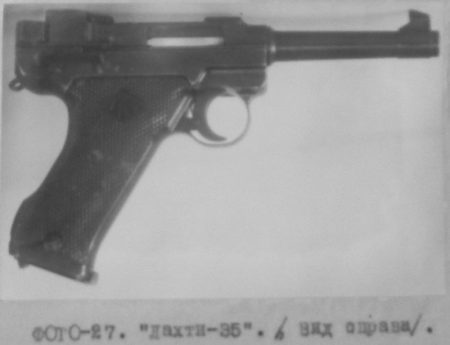
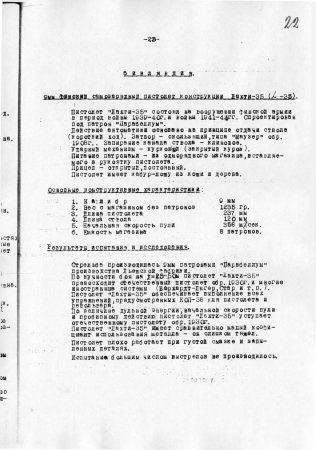
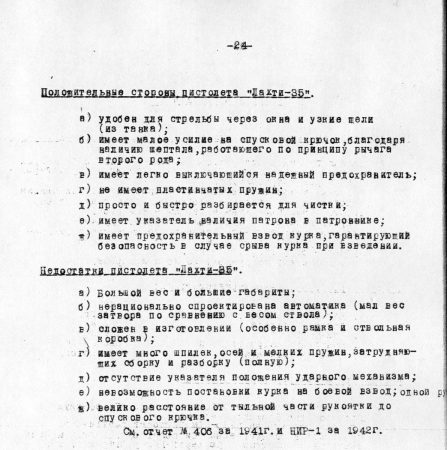
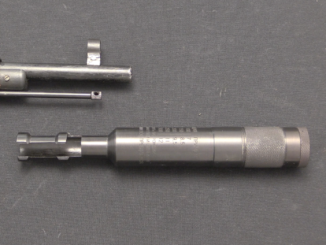
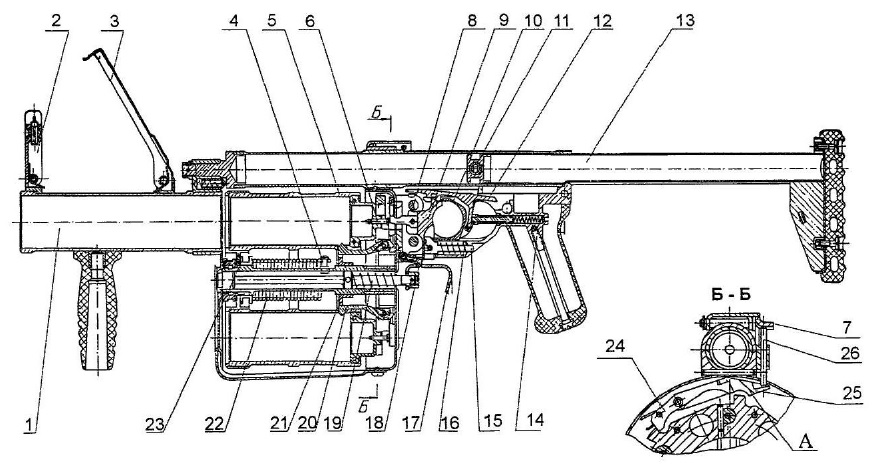
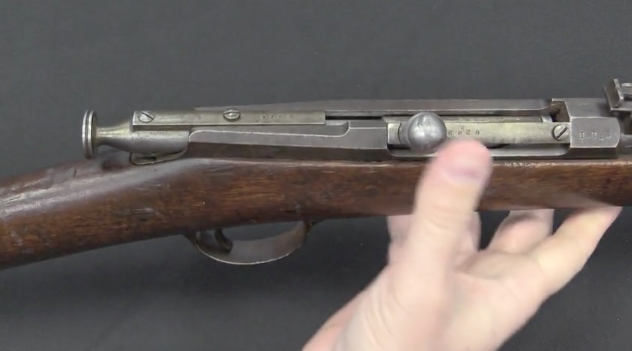
The last time I read on 1980s Pist m/40 crisis it was about frames cracking from being fired years and years with the m/39B SMG ammunition, and not from lacking locks. After 44 years of use you’d expect the user to remember how to reassemble the pistol, wouldn’t you? They were eventually replaced by Pist m/88 (Glock 17) and m/88C (G19), and so far they work with the hot loads just hanky-dory
The Fins on the other hand knew these disadvantages well and treated the pistol accordingly as what it was (e.a. a tool functioning within certain parameters). As they had had enough time to learn about them “first hand”. And it’s always good if your enemy overestimates your equipment.
It is much the same as the Germans liked and used the SVT alot with good results. I think that a large part of the test problems was the low level of Russian training. I know of 2 different Lahtis that have seen use in Texas’ panhandle for over 40 years with only springs being replaced. That is a dusty and cold place, so I think it say a good deal about the Lahti.
“It is much the same as the Germans liked and used the SVT alot with good results. I think that a large part of the test problems was the low level of Russian training.(…)”
After quick glance at https://iremember.ru/ many memoirs have in common SVT-40 as sensitive to dirt. That being said SVT-40 seems to be… more compatible with Soviet Naval Infantry, at least looking at photos here https://pikabu.ru/story/morskaya_pekhota_sssr_19411945_podborka_foto_6821391 or here https://che-ratnik.livejournal.com/388356.html
I have not yet found reviews about the SVT of the Soviet marines. Several documents that were obtained say that they had a fairly small number of SVTs.
Previously, it was believed that the SVT was respected by snipers. But data from a large 1944 poll shows that very few snipers considered the SVT to be a suitable weapon. Some said that a self-loading sniper rifle was needed, but not an SVT. SVT did not suit them in terms of reliability.
Your inane comment is special p leading. The Soviet sniff out a POS and you wheedle “it doesn’t stink too badly.”
Special pleading much? If anyone mentioned Russians using a firearm ‘within known parameters’ the gang here would be swarming how Russians can’t design jack s***. But Finns can never err.
I’d be very interested to see the testing results for all of the other pistols in the 1941 Soviet test.
I almost had the same thought. But then she left.
These are not tests whose results can be taken into account.
Considering (judging by the text of the report) that the testers did not quite understand how the pistol was arranged and worked, there could have been anything.
At least the picture of the delays indicates a possible absence or breakdown of the accelerator lever.
And in general, all these “test reports” from the USSR, are no more than all the rest of the crap from the scoop.
“(…)these “test reports” from the USSR, are no more than all the rest of the crap from the scoop.”
Due as you wish, but I would be more careful as I found it rather useful to have various samples put into exactly same course of events.
“(…)there could have been anything.”
Well, but this does apply to any random sample of size 1.
If Ian doesn’t mind, there will be other articles. Not only about these tests. During the Second World War and after it, many different weapons were tested in the USSR.
In 1941, there were 15 pistols on trial. But some, after inspection, were found not suitable for testing. Some have gone through an abbreviated program.
The full tests at the GAU shooting range were very harsh and varied.
You’re inevitably going to get a lot of “opposite of objective” views from people testing “enemy weapons”. Look at the manner in which the Allies evaluated the German machine guns, for an excellent example. One of two things tend to happen: One, the evaluators-of-enemy-weapons look at the enemy weapon and decide “Yeah, that’s a piece-o-shiite, and we don’t want none…”, or, two, they look at the weapon and realize that “Holy schnikes, this beats ours stuff to hell and back…”, followed by whistling in the dark and studious ignorance.
US experience with evaluations of foreign machine guns has followed both failure modes. First one? MG42. Second one? The PKT. Both occasions should have been an opportunity for clarity, and re-evaluation of the paths they were on. Either weapon would have been an actual improvement on what they did eventually procure, but the “system” was blind to that fact.
The M60 was a tragedy. The M240B wasn’t quite as much of one, but it is still not the ideal weapon for dismounted operations, and is clearly inferior to the PK series in terms of weight and other issues for dismount operations. The US would have been a lot better off if they’d have had the wit and wisdom to actually grasp the essentials of German machine gun design, or to have recognized superior design when confronted with the PK series of machine guns.
Paying attention to the tripods would have been nice, too…
“(…)One, the evaluators-of-enemy-weapons look at the enemy weapon and decide “Yeah, that’s a piece-o-shiite, and we don’t want none…”, or, two, they look at the weapon and realize that “Holy schnikes, this beats ours stuff to hell and back…”, followed by whistling in the dark and studious ignorance.(…)”
After looking at attached scan of page of report I do not consider it neither super-optimistic or ultra bashing, just listing what was detected. Soviets did not undertake immediate action (full switch to different automatic pistol was at least problematic during full-scale war), however they apparently were able to learn lessons so Makarov automatic pistol generally has what is listed here as advantages and has not what is listed here as disadvantages.
“Convenient for shooting through windows and narrow slots (e.g. from inside a tank)”
Note that this point is not surprising at this moment, as Soviets tank forces were looking for replacement of Nagant revolver which would fit existing firing points, which dictated exposed barrel. Mentioned Voevodin system pistol can be seen here
https://topwar.ru/37403-opytnye-pistolety-voevodina-obrazca-1939-g.html
it did eventually went in limited scale production (estimation: up to 1500 examples made) and was tested against Astra (C-96 lookalike), Parabellum Pistole and Webley & Scott automatic pistol.
There were also exposed-barrel automatic pistols developed by other Soviet fire-arms designers at this time, one by I. I. Rakov, see 1st photo from top
http://alternathistory.com/opytnyj-pistolet-rakova-obraztsa-1939-goda-sssr/
and one by F. V. Tokarev see 19th image here
http://historypistols.ru/blog/pistolety-pod-unitarnyj-patron-avtomaticheskie/opytnye-obrazcy-pistoletov-tokareva/
>tested against Astra (C-96 lookalike)
This is not correct information. We are talking about tests, where there was a pistol “Lahti”. There was no Spanish copy of the Mauser. The Astra pistol did not take part in the firing tests. There were no cartridges for him. Judging by the photo, it was Astra 400. The testers evaluated only its design and weight data.
The Astra 400 sample must have been obtained by Soviet “advisors” during the Spanish Civil War. It is interesting to note that the 9mm Largo ammunition was not sourced at the same time as the pistol (or pistols) from Spain…
Yes, there were “many experimental developments”.
But in the end they accepted first the “improved” design of Browning, then Walther, then…
nothing.
And the material presented looks untrustworthy.
First, (and main) because of the source.
Second, a number of inaccuracies and negligence that should not be in such documents.
It looks (at best) like an informational directional overview, but not a landfill report.
You can personally visit the city of Podolk, where the Central Archive of the Ministry of Defense of the Russian Federation is located. Archival details of the document in the article.
Fond 81 (GAU KA) inventory 12040 (small arms) case 371. It will not be too difficult for you to make sure that it looks exactly like this.
The article describes the tests of the captured weapons.
The Finns did not provide the USSR with many completely new pistols for testing.
What should be not overlooked is that in this report mention that for shooting 9 mm cartridges “Parabellum” manufactured in Liège were used and there was not test using huge number of cartridges. These might be not complicated in what Finnish forces did used themselves.
Many thanks to Andrey,
for the translation and sharing it with us.
I used to have an M40 Lahti
I agree with the observations, the distribution of weight amongst the moving parts is all wrong
I found my Lahti to be less sensitive to dust and fibres, than the Lugers that I’ve worked on. Fibres of steel wool, left over from cleaning rusted examples, were very difficult to get out of Luger race ways, and any remaining stray fragments seriously affected their functioning, especially getting the toggle to go fully into the locked position.
but both pistols suffer from having a light bolt and two sets of slideways
Admittedly, The Lahtis are made with shallow relief cuts on the bolt, to reduce the sliding contact area and associated friction.
I liken the sliding surfaces on the bolt to sledge runners.
There is a limit to what can be achieved with a separate slide and bolt in a locked breech pistol design,
The exact same problems were found once again with the Auto Mag pistol which followed this layout.
These are problems that a browning slide has the potential to cure
Though a badly designed or badly manufactured pistol with a browning slide can still mess up.
This is really interesting. I hope there will be more content like this in the future.
The story is about test taking place (presumably) in 1941. But the text (in Russian) on the document with the test results on second picture says: “The Lahti pistol was in service with the Finnish Army during the war of the 39th-40th and the war of the 41st-44th year”.